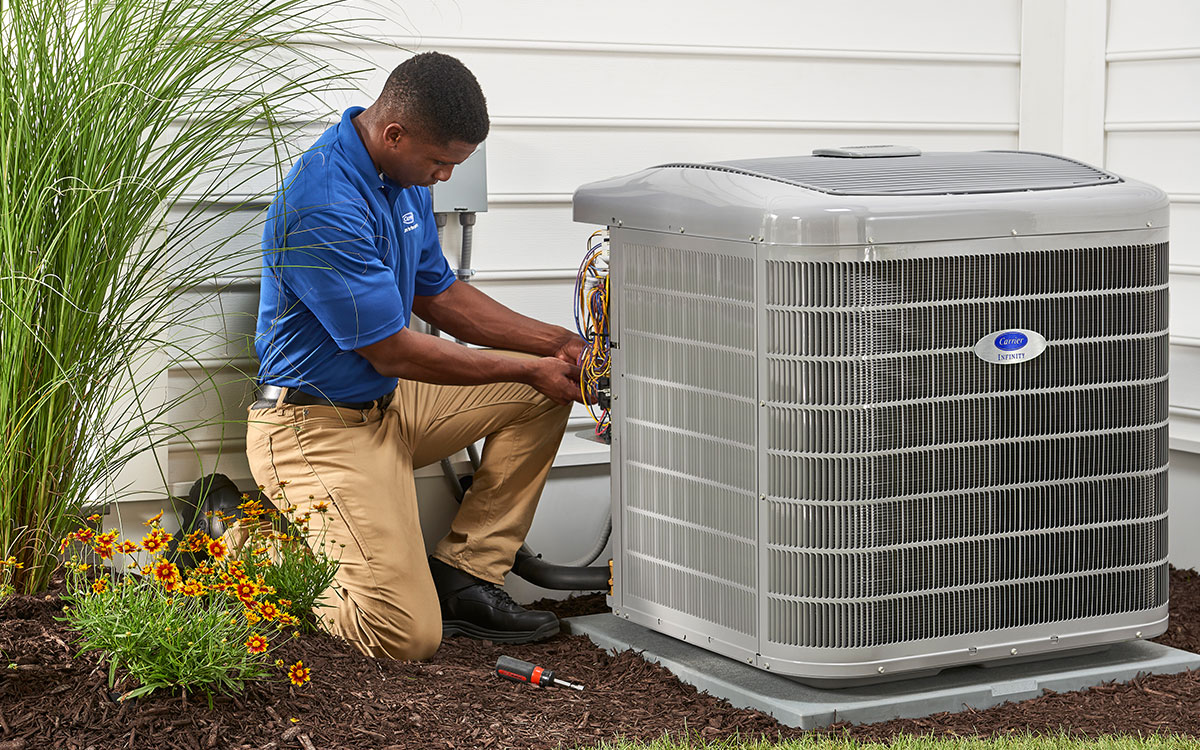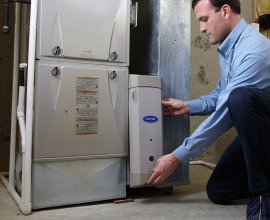
HVAC systems are very popular in the US, with over 70% of homes having an AC system installed.
Looking at the bigger picture, the market size for HVAC systems was a staggering $30.41 billion in 2023.
This proves how important these systems are for our daily lives and it’s easy to see why. HVAC systems help maintain an optimal indoor environment, both in terms of temperature and air quality, regardless of external conditions.
When it comes to Pittsburgh, known for its strong seasonality and diverse climate, the importance of a well-installed and maintained HVAC system cannot be overstated. However, HVAC installation in Pittsburgh is not as straightforward as it might seem. It’s not just a simple buy-and-use process. Getting the optimal performance involves careful planning and designing of the system, installing the indoor and outdoor units, connecting them, setting up the thermostat, and testing the system to ensure it functions as expected.
While it might be tempting to attempt the installation by yourself, faulty installations can have long-term effects that not only include malfunctioning systems but also increased energy costs and even potential safety hazards.
That’s where professional HVAC installers come into the picture. Their expertise and experience ensure that our HVAC system is installed correctly and efficiently, helping you avoid the complications that may come with DIY installation.
In this blog post, you’ll learn about the process of HVAC installation and why you should consider a professional installer over trying to do it yourself.
A step-by-step guide to HVAC installation in Pittsburgh
Let’s delve into the process of installing an HVAC system on your property.
1. Planning and designing the system
The first step is to plan and design the system that will go on your property. Here, you will need to determine the size of the unit you need, the type of system that will best suit your and the property’s needs, and the best location to install the system. This is a crucial step, as it can spell the difference between a smooth system and one stricken with energy inefficiencies and increased energy costs.
While you may be able to do the basic planning yourself, it’s best to employ a professional to make the critical decisions.
2. Installing the indoor unit
When it comes to the actual installation, the indoor unit of the HVAC system will be installed first. This typically includes the air handler or furnace and the evaporator coil. The installation involves securing the unit in place, connecting it to the ductwork, and ensuring that proper drainage is available for the condensate line.
If you’re a handy homeowner, you may be tempted to take on this task yourself. However, improper installation can cause issues like water damage from a poorly connected condensate line. So considering a professional for HVAC installation in Pittsburgh is ideal.
3. Installing the outdoor unit
Next, the outdoor unit, or the condenser, needs to be installed. This has to be placed in a suitable location with adequate airflow and easy access for maintenance. The system must be level and away from plants and other obstructions that can affect airflow.
While this may seem like a simple step, a professional installer can help ensure that the system is installed correctly in the right position for optimal performance.
4. Connecting the indoor and outdoor units
Next comes the connecting part. Here, the indoor and outdoor units need to be connected with refrigerant lines. This must be done carefully to prevent leaks, as 60% of commercial HVAC systems and 62% of residential systems have been recognized to have incorrect refrigerant charges according to a NIST study.
This step also involves electrical wiring, which should always be handled by a professional to ensure safety and compliance with local codes.
5. Setting up the thermostat
A thermostat manages the operation of the HVAC system. This has to be correctly wired to the system and its settings should be configured properly to ensure the system operates efficiently.
Most modern thermostat systems are designed for easy installation; however, a professional installer can also help in this regard by ensuring that the process is carried out correctly, and carry you through the initial setup.
6. Testing the system
Once the initial installation is done, it’s important to thoroughly test the system. This helps ensure that it performs without any hiccups. Testing involves checking all the connections, activating the system under different conditions, and making necessary adjustments if faulty or suboptimal performance is noticed.
This is yet another task that a professional installer with the tools and knowledge can perform much better—carrying out comprehensive testing and making necessary tweaks on the go.
Studies have demonstrated that 30-70% of HVAC installations might have some level of mistake or deficiency. Employing a professional installer can help you avoid these complications, ensuring that your home or workplace can benefit as promised from an HVAC system.
Why you need a professional for HVAC installation
As stated before, mistakes in HVAC installations are quite common. These can range from improper sizing of the system and incorrect equipment placements to incorrect ductwork and faulty refrigerant charging.
The impacts of these errors may include reduced energy efficiency, poor indoor comfort and air quality, decreased lifespan of the system, and potential safety hazards which can be quite devastating. Studies have shown that over 65% of private HVAC frameworks are not installed properly, leading to roughly 20-30% more energy consumption than necessary. For households in particular, improper installation of HVAC systems can increase energy usage by up to 30%.
However, when HVAC systems are correctly installed, the improvements can be substantial. A study by NIST revealed that correctly installed HVAC systems demonstrated a maximum energy improvement of 12% for corrected airflow, 21% for adjusted refrigerant charge, and 26% for eliminated duct leakage. Additionally, better HVAC installation practices have the potential to save 25% of energy in existing homes and 35% in new construction.
Professional HVAC installation in Pittsburgh can help you get all these benefits and more; like minimizing the risk of future repairs and costly damages, providing 24/7 availability for any emergencies, guaranteeing customer satisfaction, servicing most major makes and models, and even offering financing options with approved credit.
Get a reliable HVAC system installed on your property with professional installers
HVAC systems are a sizable investment, and ensuring their correct installation is crucial. Professional installers help make sure that your HVAC system is installed correctly, efficiently, and safely.
So why wait? Make use of their HVAC installation services and experience the difference that a professionally installed HVAC system can make in your home or workplace.



